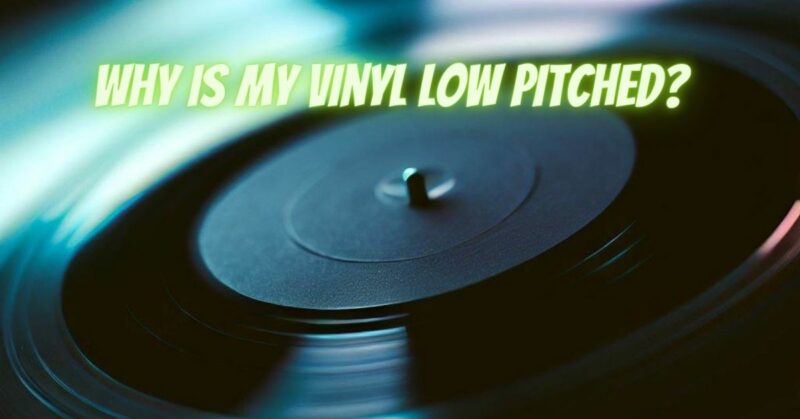Vinyl records offer a unique and immersive audio experience, but encountering low-pitched sound issues can be frustrating. If you’re wondering why your vinyl sounds low-pitched, this article will delve into common causes of this problem and provide insights on how to address it effectively.
- Incorrect Turntable Speed: One of the primary reasons for low-pitched sound is an incorrect turntable speed setting. Vinyl records are designed to be played at specific speeds, most commonly 33 1/3 RPM (revolutions per minute) for full-length albums and 45 RPM for singles. Check that your turntable is set to the correct speed corresponding to the record you’re playing. Some turntables may have a switch or button to adjust the speed, while others require manual belt adjustments.
- Worn-out or Slipping Turntable Belt: A worn-out or slipping turntable belt can lead to speed inconsistencies, resulting in a low-pitched playback. Inspect the turntable belt for any signs of wear, stretching, or slipping. If necessary, replace the belt following the manufacturer’s instructions to restore proper speed and pitch.
- Improper Tonearm Tracking Force: The tonearm’s tracking force, which determines the downward pressure applied to the stylus, plays a crucial role in accurate playback. If the tracking force is too low, the stylus may not make proper contact with the record grooves, causing a low-pitched sound. Refer to your turntable’s manual or cartridge specifications to ensure the correct tracking force is set and properly balanced.
- Misaligned Cartridge: A misaligned cartridge can cause tracking errors, leading to pitch variations in the playback. Check the alignment of your cartridge and stylus to ensure they are properly aligned with the record grooves. Improper alignment can be corrected by following the manufacturer’s guidelines or seeking professional assistance.
- Incorrect Phono Equalization: Phono equalization is essential for proper frequency response during vinyl playback. If your turntable’s phono preamp or integrated preamp has incorrect equalization settings, it can result in a low-pitched sound. Ensure that the phono equalization settings, such as the RIAA curve, are properly applied to match the record’s intended equalization.
- Warped or Damaged Records: Warped or damaged records can cause pitch variations during playback. Inspect your vinyl records for visible warps, scratches, or other damage. If a record is severely warped or damaged, it may be challenging to achieve consistent pitch. Consider replacing heavily damaged records to ensure optimal sound quality.
Conclusion:
Experiencing a low-pitched sound on your vinyl records can detract from the immersive experience they offer. By checking the turntable speed, inspecting the turntable belt, adjusting the tonearm tracking force, aligning the cartridge properly, verifying the phono equalization settings, and assessing the condition of your records, you can troubleshoot and address the issue effectively. Remember to handle your vinyl records with care and maintain your turntable setup following the manufacturer’s guidelines for optimal playback performance. With the right adjustments and attention to detail, you can restore the pitch accuracy of your vinyl records and enjoy the full sonic experience they were meant to deliver.


